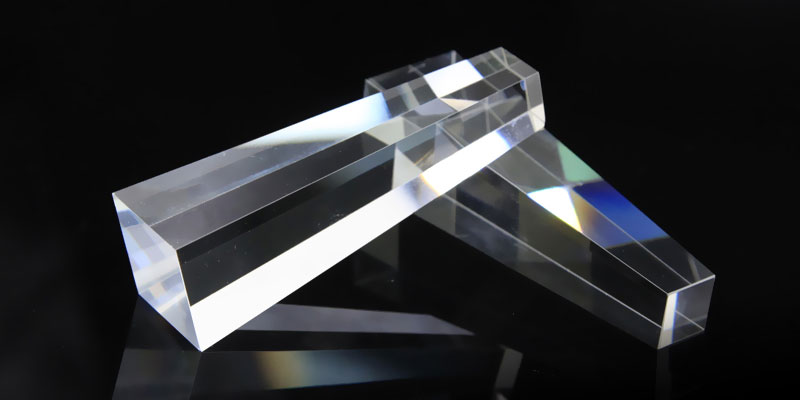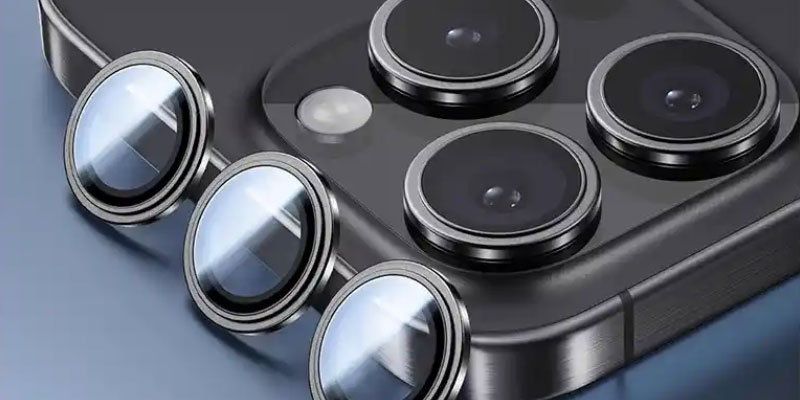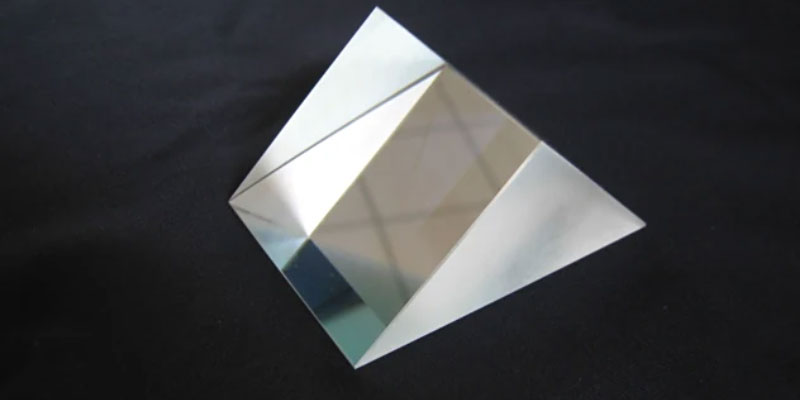
A right-angle prism mirror is a common optical component widely used in optical systems, laser technology, measuring instruments, and other fields. It utilizes the principle of total internal reflection to efficiently alter the direction of light propagation, featuring a simple structure, stable performance, and high reflection efficiency. This article will provide a detailed overview of the working principle, application scenarios, and advantages of right-angle prism mirrors.
1. Working Principle of Right-Angle Prism Mirrors
Right-angle prism reflectors are typically made from transparent optical glass or quartz material, shaped as a right-angle prism, consisting of two right-angle sides and one hypotenuse. When light is incident vertically on one of the right-angle faces of the prism, it undergoes total internal reflection at the hypotenuse and then exits vertically from the other right-angle face, thereby achieving a 90-degree deflection of the light beam.
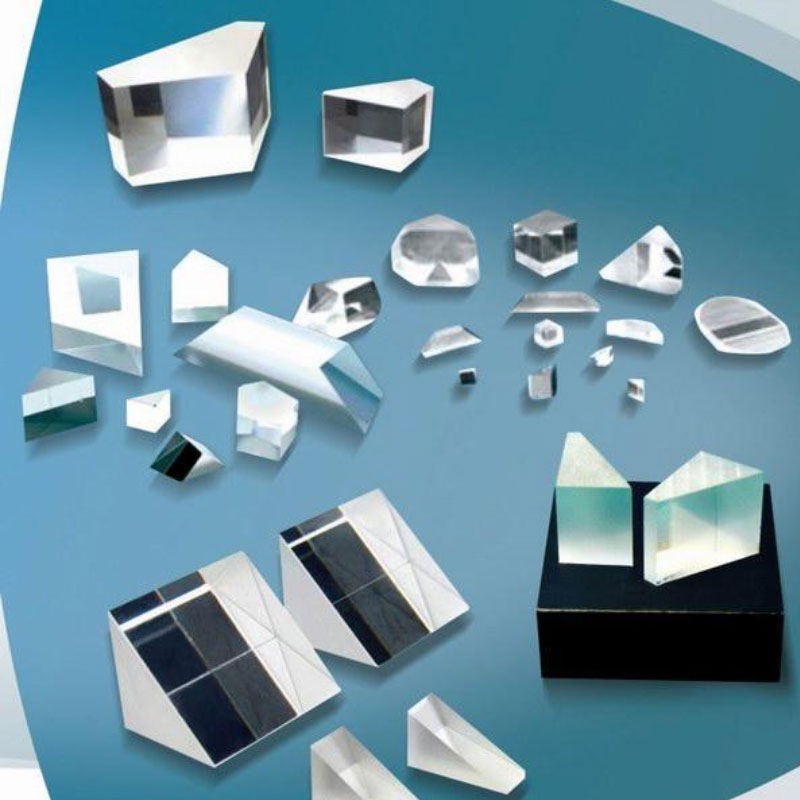
Total internal reflection is the core principle behind the operation of right-angle prism mirrors. When light travels from a denser medium (such as glass) to a less dense medium (such as air), if the angle of incidence exceeds the critical angle, the light will not refract into the less dense medium but will instead be fully reflected back into the denser medium. The hypotenuse design of the right-angle prism ensures that the angle of incidence on the hypotenuse exceeds the critical angle, thereby achieving total internal reflection.
2.Application Scenarios of Right-Angle Prism Reflectors
- Optical Systems: In optical systems, right-angle prism reflectors are commonly used to alter the direction of light paths, simplifying the design of optical systems. For example, in optical instruments such as telescopes and microscopes, right-angle prism reflectors can redirect light, making the instrument’s structure more compact.
- Laser Technology: In laser technology, right-angle prism mirrors are used for redirecting and reflecting laser beams. Due to their high reflectivity and low loss characteristics, they effectively maintain the intensity and direction of the laser beam.
- Measuring Instruments: In measuring instruments, right-angle prism mirrors are commonly used for optical path calibration and adjustment. For example, in devices such as laser rangefinders and interferometers, right-angle prism mirrors can precisely alter the optical path to enhance measurement accuracy.
- Optical communication: In optical communication systems, right-angle prism mirrors are used for redirecting and reflecting light signals, ensuring efficient transmission of light signals through optical fibers.
3.Advantages of Right-Angle Prism Mirrors
Figure 3: Correcting spherical aberration using an aspherical lens
Another advantage of aspherical lenses over traditional lenses is the reduction in the overall length and weight of the optical system. The phenomenon of reduced optical system size in Asphericon aspherical lens applications can also be found in other optical devices, such as photographic lenses. In a system with only one lens, by optically magnifying one surface of two lenses, a focal length system can be achieved, along with beam expansion and increased beam diameter, without causing divergence errors. Due to the focal length characteristics of this system, multiple lenses can be connected in a row to reduce the size of the optical system while changing the total beam diameter.
3.Comparison of Spherical and Aspherical Lenses
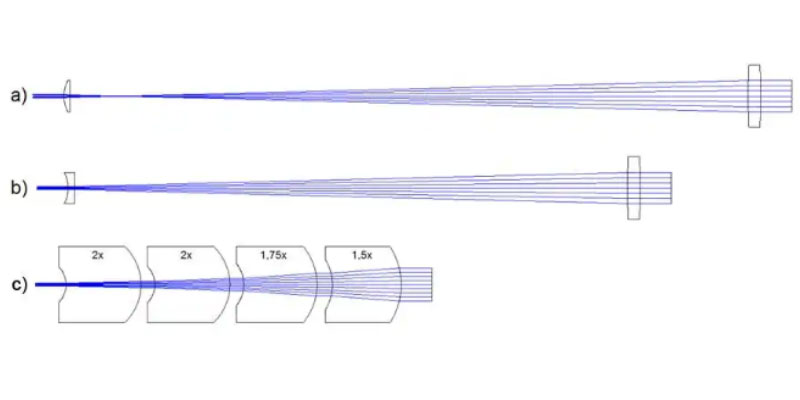
- High reflectivity: Due to the principle of total internal reflection, right-angle prism mirrors achieve reflectivity close to 100%, significantly higher than that of conventional mirrors.
- Simple Structure: Right-angle prism mirrors have a simple structure, making them easy to manufacture and install, thereby effectively reducing the complexity and cost of optical systems.
- Excellent Stability: Right-angle prism mirrors are made of optical glass or quartz materials, offering high mechanical and thermal stability, ensuring consistent performance under various environmental conditions.
- No coating loss: Unlike ordinary reflectors, right-angle prism reflectors do not require a reflective coating, thus avoiding issues such as coating loss and aging, resulting in a longer service life.
4.Summary
As an efficient optical component, right-angle prism reflectors, with their high reflection efficiency, simple structure, and excellent stability, have found widespread application in fields such as optical systems, laser technology, and measuring instruments. With the continuous development of optical technology, the application prospects for right-angle prism mirrors will become even broader, offering more possibilities for the design and optimization of optical systems.
Through this article, readers should now have a deeper understanding of right-angle prism mirrors. In practical applications, selecting the appropriate right-angle prism mirror can effectively enhance the performance and reliability of optical systems.
optlenses
Related posts
Activity 11 Optics Of The Human Eye
What is The Surface Area of This Rectangular Prism Brainly?
How to Get Super Glue Off Eyeglass Lenses?
Why are Some Phone Companies Copying Iphone Camera Lenses?

